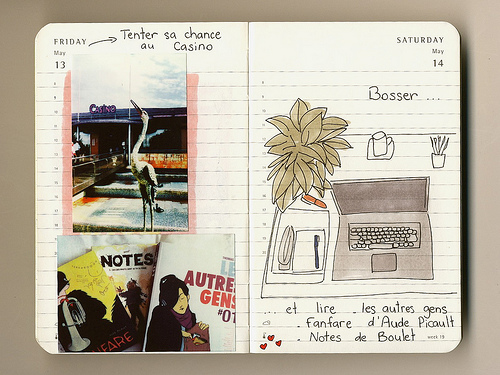When I travel I usually know I’ll be headed out weeks in advance. It’s rare that I take an improtu trip, so this past week when I got the call that I’d be headed to Buffalo, NY for a funeral I didn’t plan as usual. I decided to put into practice my goals for this week’s Cult of Stuff. I wanted to use tools I don’t always use to document the travel and occurrences.
So I packed the following:
travel watercolor set
Pogo Printer
Pocket Moleskine Sketchbook (purple label)
Assortment of Waterbrushes
3 Rolls of Washi Tape
Pen
Pencil
Eraser
Vial of Ink
Cutting Mat and Exacto
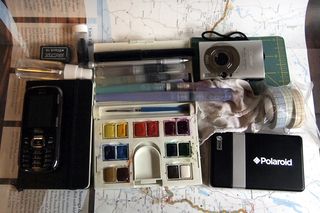
I never travel anywhere without my point and shoot Canon digital Elph aka Powershot SD1100 IS, which replaced my beloved SD110 which fell out of my pocket during a motored bike ride. I never go anywhere without it so I don’t list it as a “packed thing” but it was something I used for journaling as well as the camera on my cell. These combined with my pogo made for some great direct to page items that allowed me to capture ideas fast without having to do a lot of drawing or image making.
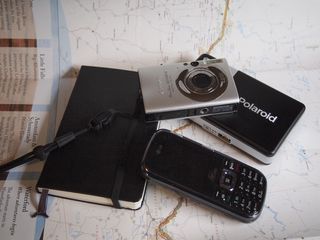
What I accomplished with the pogo could easily be done by taking your card into a walgreens or cvs and using one of their kiosks for photo printing, I enjoyed working with the odd format of the pogo. To each their own. I worked somewhat chronologically and printed images with the pogo and stuck them into my journal, I then used some washi tape to frame them and add more interest to the page.
On our trip out to Buffalo we made a few pit stops on the Thruway here I picked up a few brochures. I cut a map and an image of a state trooper out of this material. Since I forgot my glue I used washi tape to adhere them to the page. Later I added some watercolor around the whole page.
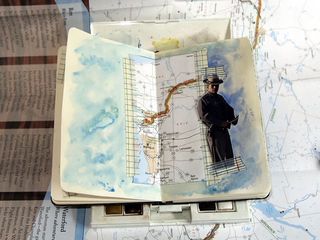
In addition to the pictures I took and the brochures I collected I had a few found objects and packaging from a few things. I taped these into the journal as well.
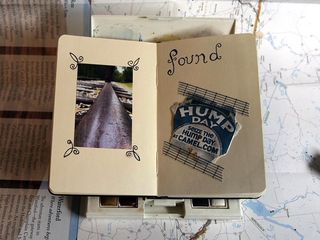
My goal in this was to create a few pages to journal on about specific things- the funeral, the traveling, conversations with my brother, long walks on train tracks, and other various things that come to mind.
These pages are extremely personal and I don’t know how personal they would be if I had not gathered each of these materials, even the trash that is on the page is personal to me, though it’s mass produced, it’s totally out of its original context and purpose. I think that adds meaning.
Also best piece of ephemra? A squished penny from a kiosk just over the Mass border, I paid 50 cents for it. I'll attach it to the bookmark of my moleskine ASAP. (My brother got one in NY but I had just dumped my pocket change and didn't have time/energy to go back to the car.) The back of it says "ActionJackson." Kick ass.
